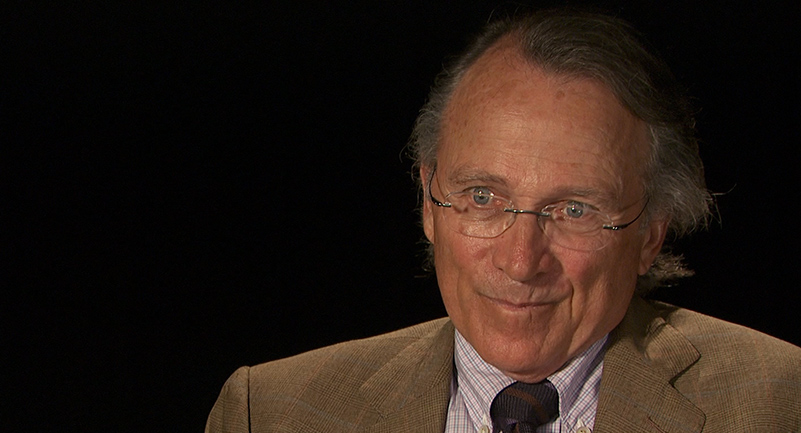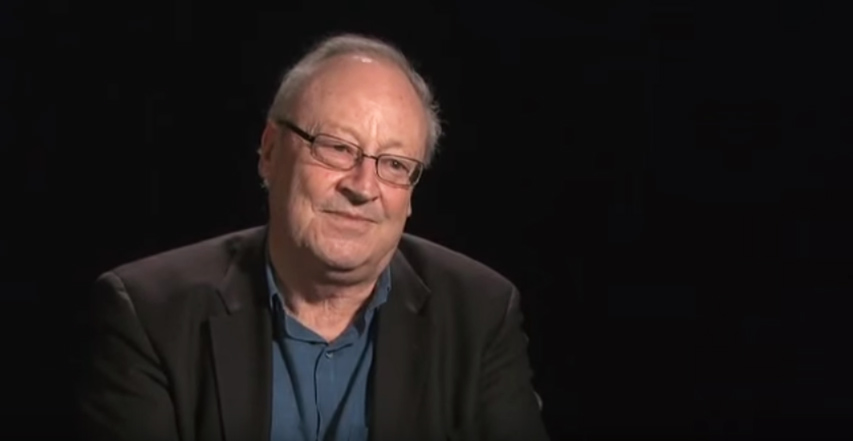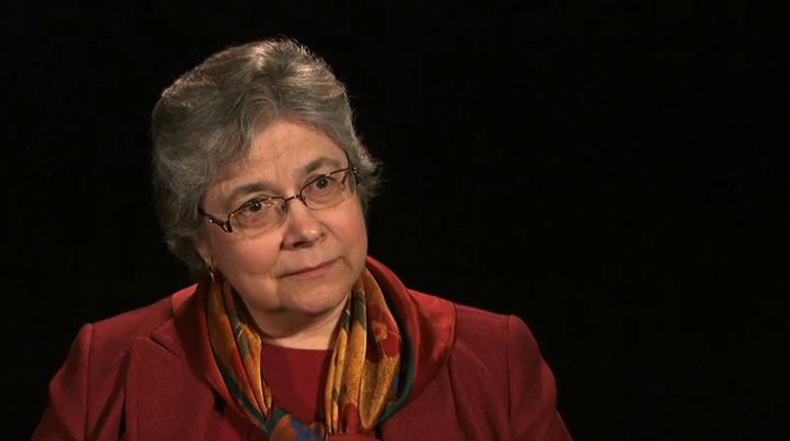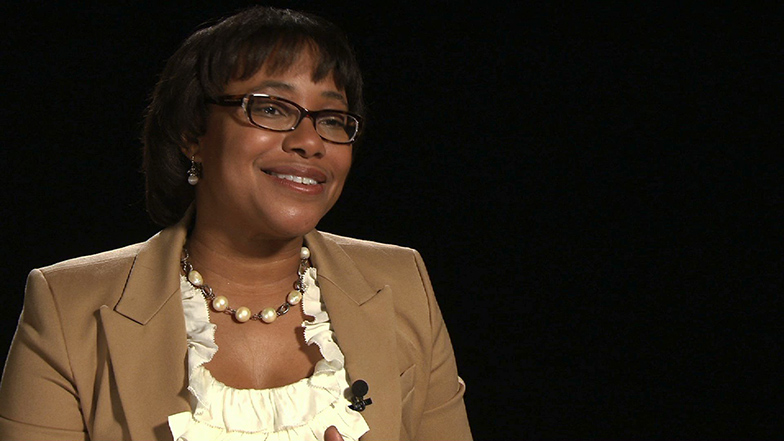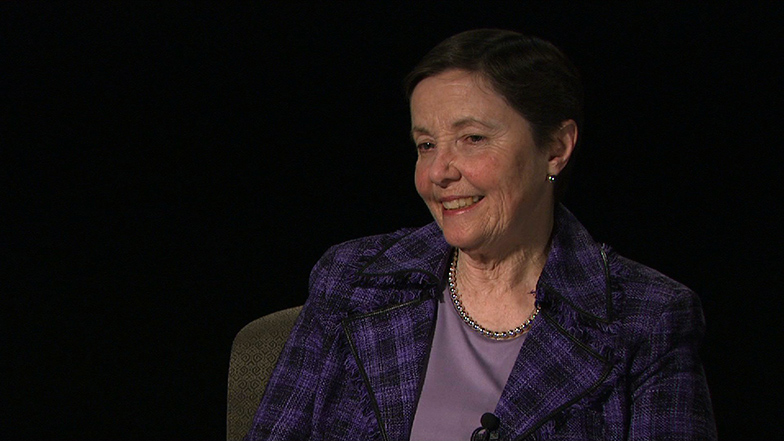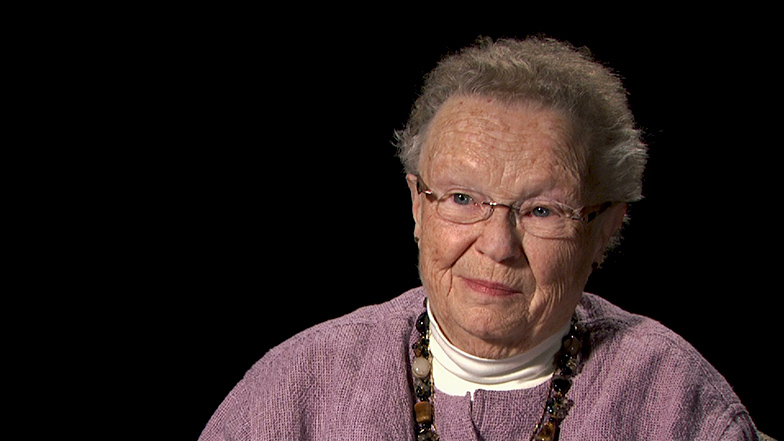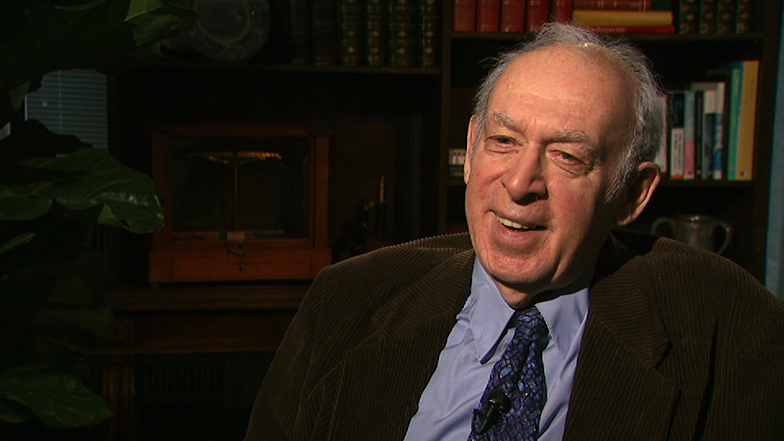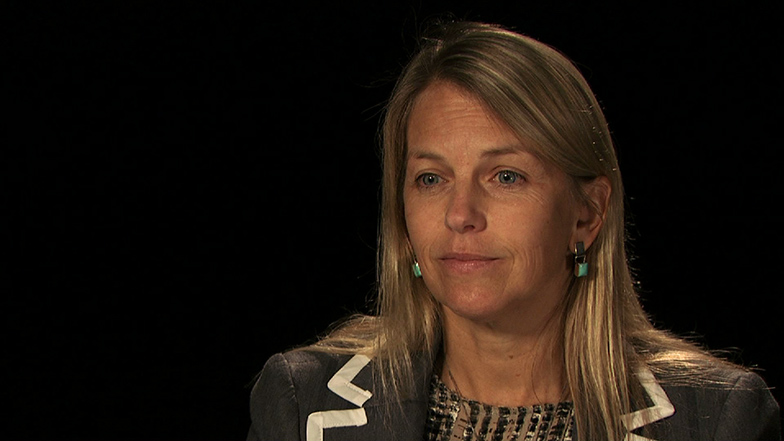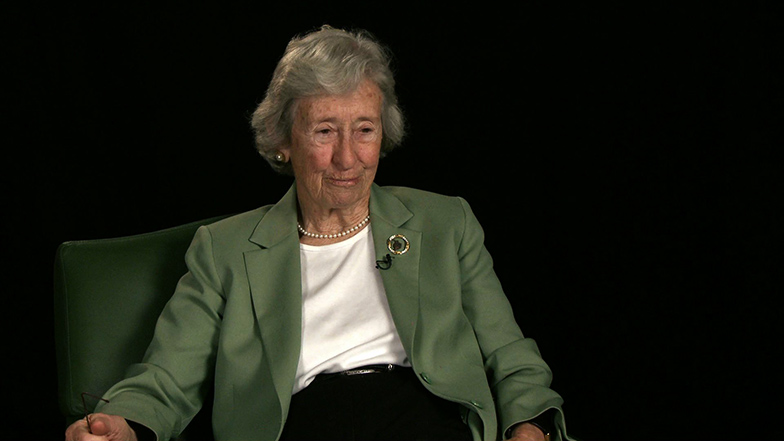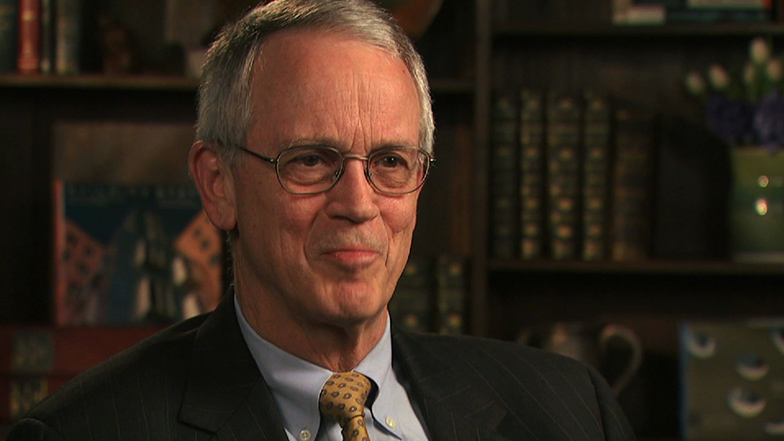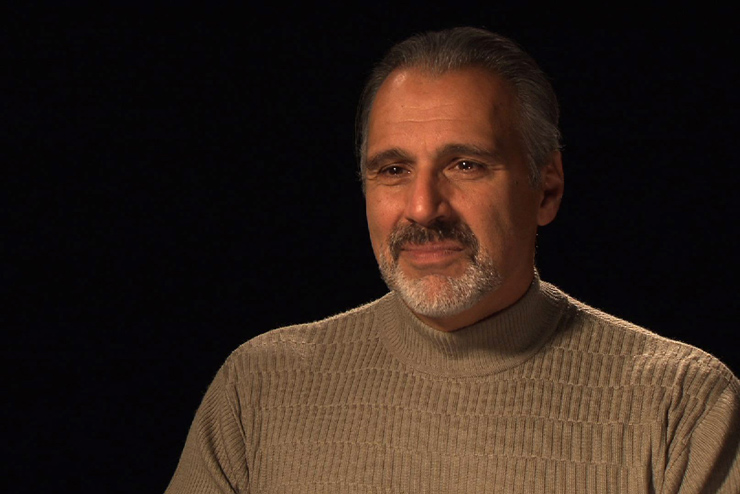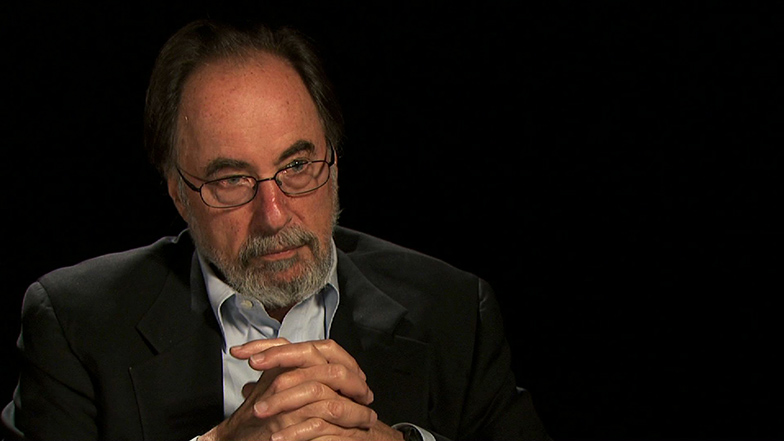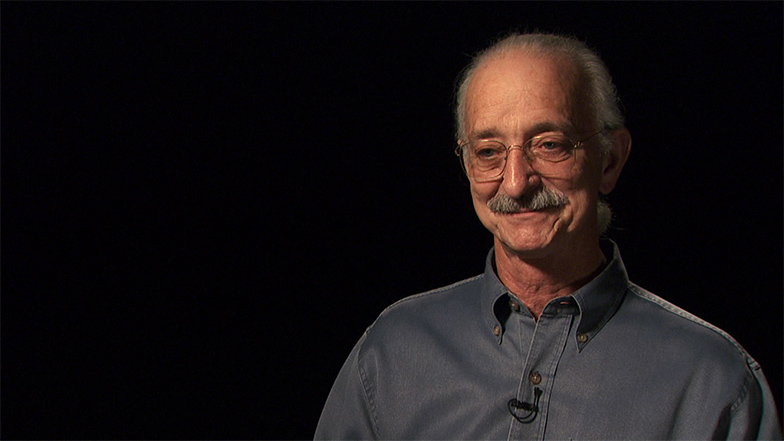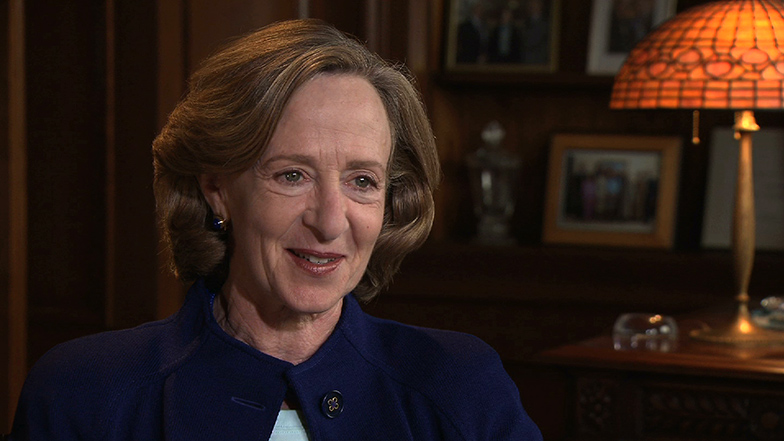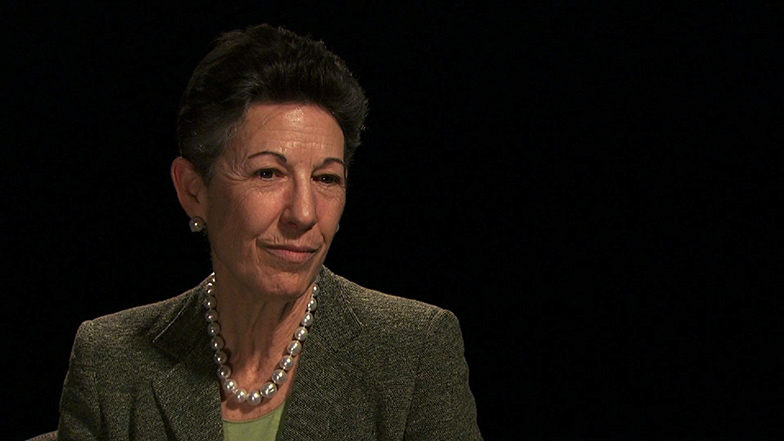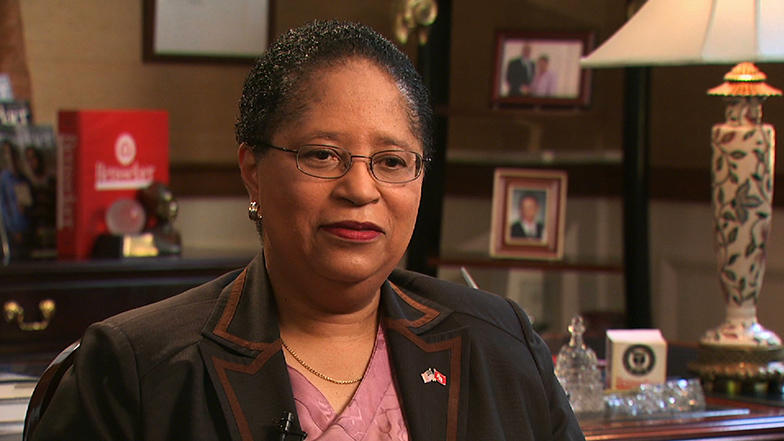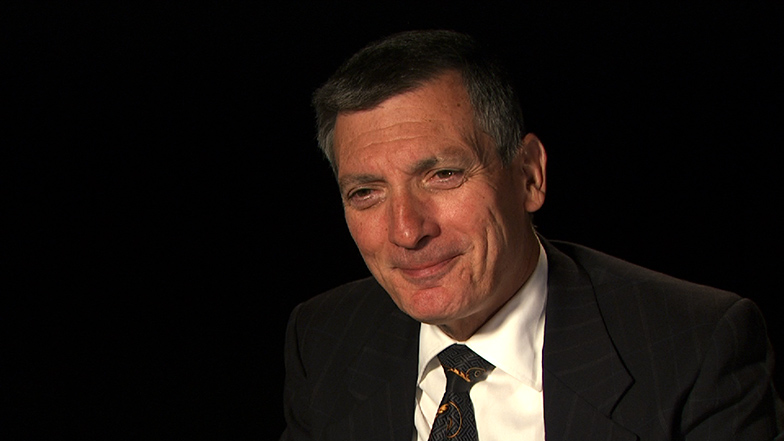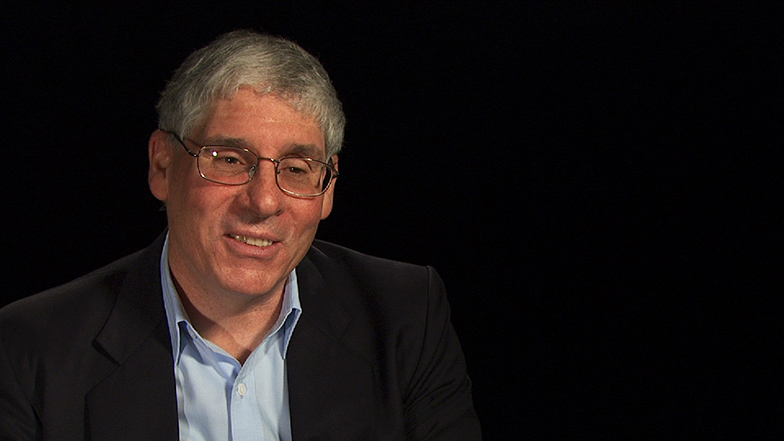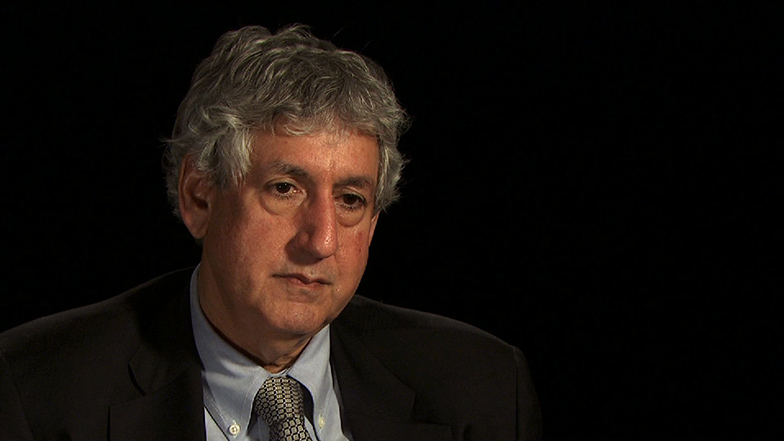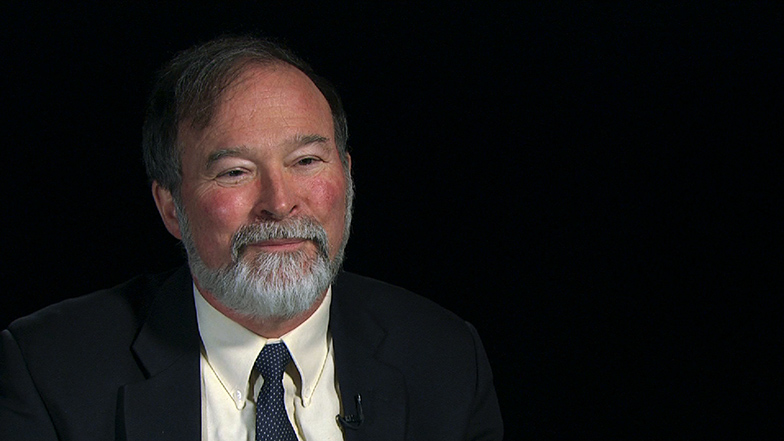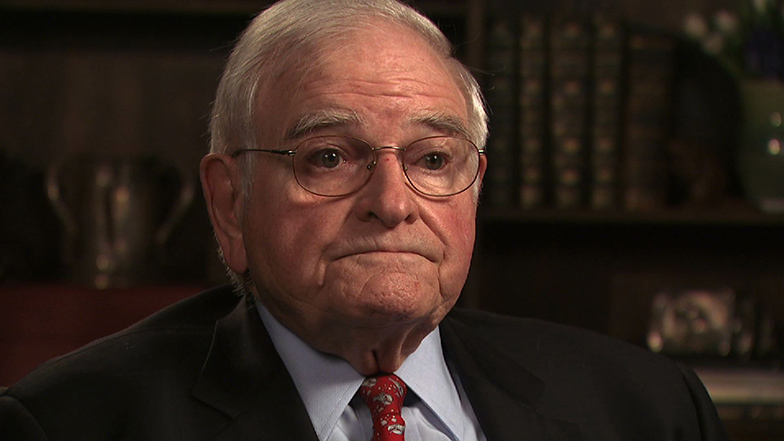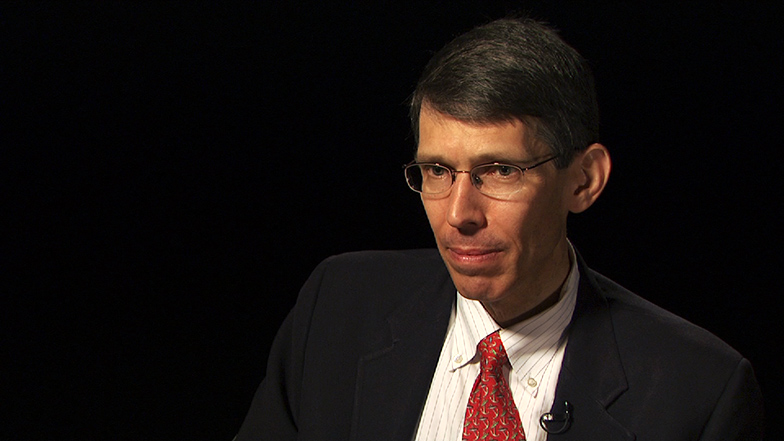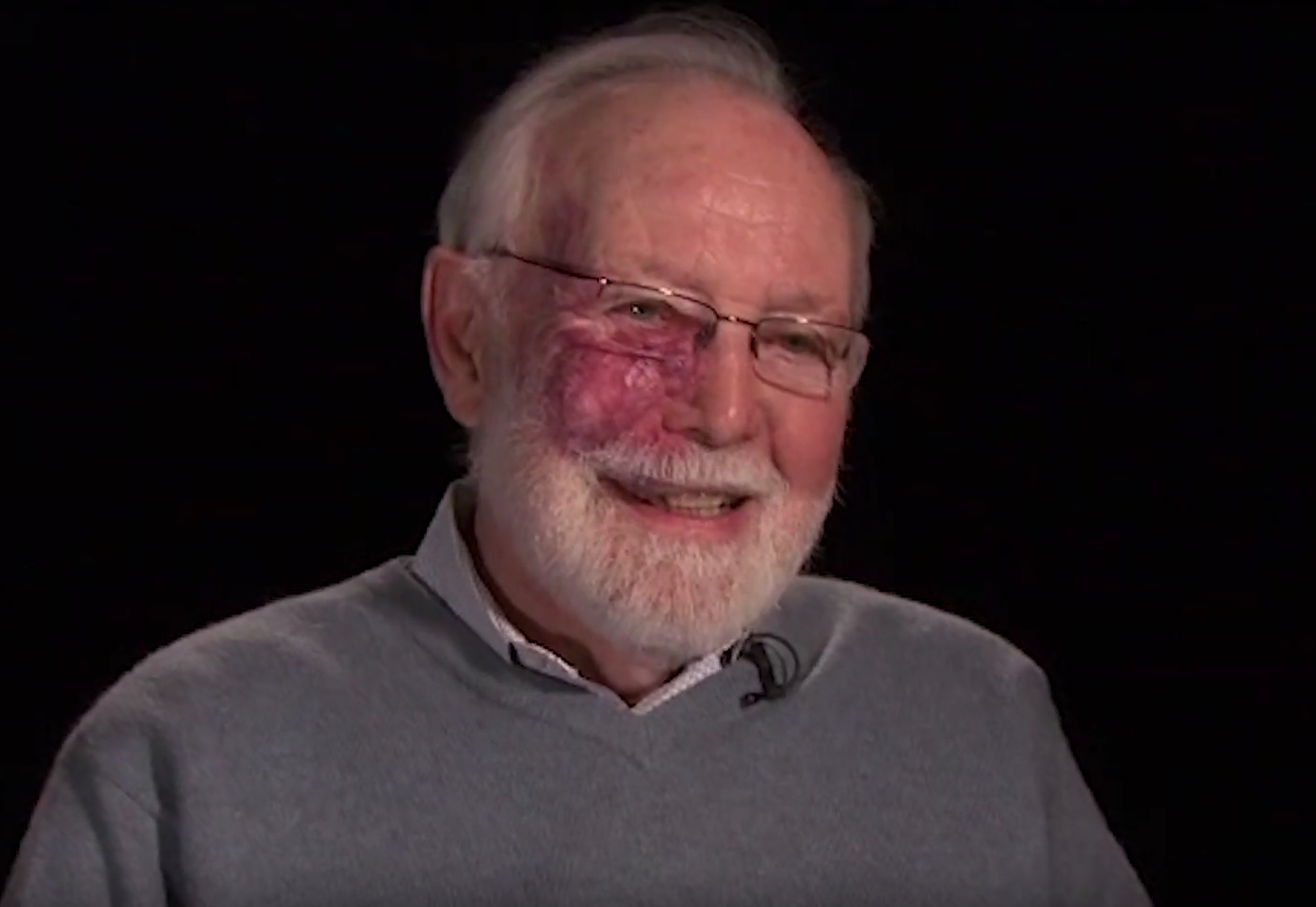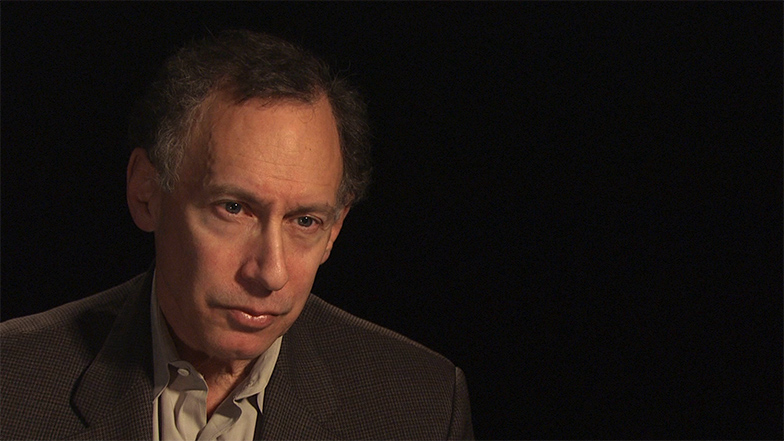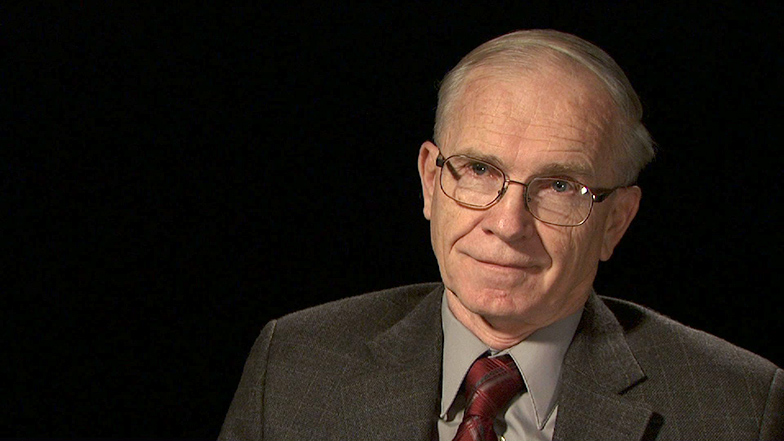Lotte Bailyn
INTERVIEWER: So this is the interview with Lotte Bailyn, who is the Sloan professor of management for organizational studies. I guess the first question I'd like to ask you is tell me where you were born and where you grew up.
BAILYN: Well, I was born in Vienna, Austria. I grew up in New York City. I came as a child just before the war -- good time to come. Was in New York City until I went to college, and then I came to Cambridge to go to graduate school and I've been here ever since. Got married after my first year of graduate school, and finished my PhD and then had a series of partial, half-time, funny positions, because that was at a time when women were not getting positions, and finally ended up at MIT in 1969. So it's been almost 40 years here.
INTERVIEWER: Can you tell me a little bit about your parents, what they did?
BAILYN: They were academics, both mother and father. As a matter of fact, there were two further stepmothers also academics. So it's a long academic family, and it even goes into one grandmother who was a professional. We have two sons who are academics. My husband is an academic, so we seem to be rooted in the academic world.
INTERVIEWER: It must be in your genes.
BAILYN: Something like that, I think so.
INTERVIEWER: Now, it was unusual at the time for you to come from a family with so many women professionals. What kind of an influence did that have on you?
BAILYN: Oh, tremendous. I mean all the way through college, I just assumed I would be a professional -- it never occurred to me otherwise. It's interesting, I went to Swarthmore College, which sort of imbued that in people. Many of my classmates, both men and women, went on to graduate schools and law schools and medical school. It's only when I came to Cambridge, Massachusetts that I realized that there are some issues about this.
When I first arrived, I was a graduate student, but I was not allowed into the main Harvard library because women weren't allowed into that library. If you went into the Harvard Faculty Club, you had to go in by the back door because you weren't allowed to go in through the front door. So, this was a new world for me. I had not anticipated that, and hadn't experienced it until really quite late. When I came, it was Harvard that really taught me what the world was really about at that time.
INTERVIEWER: That's interesting. How did you come to make the decision to go to Swarthmore to study?
BAILYN: Well, it was interesting. I actually applied to both Swarthmore and Radcliffe, and I was absolutely right, because if I had come to Radcliffe I would have hit this much earlier. There was something that appealed to me about a small liberal arts college. They had, at that time, an honors system where for the last two years of your four-year college term, you took nothing but seminars. Then your final, how you graduated, depended on external examiners coming in, giving you eight written -- because you took two seminars a semester -- eight written exams and eight oral exams. I've always said nothing I did for my PhD came close to the pressure and the concerns of those honors exams. In retrospect I was just very glad that I chose Swarthmore over Radcliffe.
INTERVIEWER: It must been great preparation for you. What drew you to mathematics?
BAILYN: Well, I always liked it. I did fairly well. I did discover -- between my junior and senior year I went to Seattle and took some math courses just for a summer -- Seattle was a lovely city and seemed like a nice place to go. I took one graduate course, and I discovered I was not going to be a mathematician. I knew I could probably learn enough to teach it, but it was perfectly clear to me that I could not be creative or really in mathematics. But I liked it. Partly perhaps, my father had-- though he also turned into a social scientist, but had done his degree in mathematics, and actually he has a son, my half brother, who is a very well-known mathematician now. So it went to him, not to me. I just, because I enjoyed it, up to that time, had always been good at it. Then the limits came. I think that happens often in mathematics. You know, that there comes a point where there's a limit for many people.
My first thought in coming to graduate school was to apply mathematics to the social sciences. I came to the old social relations department at Harvard that it was really an extraordinary time. They had the biggest social psychologists, the biggest sociologists, the biggest cultural anthropologists, the biggest clinical psychologists all in that one department and we all had to take all of that. But after a while, the social science took over and I realized that I didn't want to just apply mathematics -- that was fun and that was games -- I wanted to really try to understand what's going on, and that didn't seem to be as easy with math. So it was a transition.
INTERVIEWER: That change of focus happened during graduate school?
BAILYN: It happened during graduate school, yes. I started off actually working a little bit with a person there, a big statistician, who later actually started the statistics department at Harvard. Again, the limits began to come up. So then I shifted first to a more cognitive psychology, and finally shifted even to the kind of work that I then did for many years until I shifted again much later at MIT, which was pretty standard social science, was survey kinds of understanding of different social phenomena. So my dissertation was on the effect of the mass media on children. I kept some of the mass media studies for a while.
But then what I began to do depended on what job I happened to have. Because when I graduated there were no academic jobs for women. It never occurred to me -- my husband, by that time, was on the faculty at Harvard -- and it never occurred to me that I would go someplace else. I mean that's a phenomenon now, which never occurred to me. So I finally got the job that one of my male fellow graduates had turned down, which was a research job. So then I started working on whatever research project I happened to be involved with.
INTERVIEWER: Is there more you want to say about the kinds of limits that you ran into?
BAILYN: Well, limits is an interesting question. Clearly, there was a job limit. I think it was primarily the outside world. I think it was also a little bit me. I mean I didn't think of I could go beyond the Boston area to look. We did not have children yet. I knew I wanted very much to finish my degree. I felt if we had children I wouldn't be able to do it. So I do think the limits were largely external in some sense, but it was also -- I mean what many people are doing now, what my kids and their spouses are doing, never occurred to me. So it was a mixture, I think, of limits.
INTERVIEWER: Back in 1963, the American Academy of Arts and Sciences had this conference called, The Woman In America. Can you explain how that figured into your life?
BAILYN: That was so interesting. So this was a conference called The Woman In America. It was put out by Daedalus, which is the journal of the American Academy of Arts and Sciences. They sponsor conferences, and this one was called The Woman In America. Despite Harvard and Cambridge, I had not yet completely come around and I couldn't understand why one would have a conference on the women in America -- no one would have a conference on the man in America, so what is this all about. But at any rate, David Riesman and Erik Erikson were there -- these are the people I remember. And Alice Rossi was there, and she wrote this very famous paper for that issue on androgyny, arguing very strongly that men and women are equal and should have the same opportunities -- interestingly, she somewhat modified in later years. But what struck me as very strange at the time is that, and I remember talking with Alice Rossi in the lady's room how strange this was that both Riesman and Erikson were saying that a woman lawyer would do it very differently than a man lawyer. Erikson had this notion of spaces that women went to inner spaces and men to outer spaces. I thought this was crazy. I've also changed somewhat. My contribution to that was really going back to your question on limits, it was really on the sort of limits of choice.
I had this thought that men -- let me see if I can remember it correctly -- that men had no choice about what to do with their lives. They had to go make a living. But once they made that initial choice, then they had infinite choice of what they wanted to do. And women was completely the other way. They had a basic minimal choice of whether they wanted to go out and do some work or not, but once, if they decided that they wanted to go out and do some work, then the choices were constrained. So I tried to build that up. But the interesting thing of that was that how both Alice Rossi and I were sort of horrified at the notion of a woman in America and both have changed to a certain extent and it's just more complicated than that.
INTERVIEWER: Yes. But we've all learned as we've gotten older.
BAILYN: Exactly. Exactly.
INTERVIEWER: What was the purpose of having this conference with this title?
BAILYN: Well, I think they thought it completely natural, and I'm sure it was instigated by the work of people like Riesman, and particularly Erikson, who had these developmental theories and that women developed differently and they had different sense of space and time, and that this would have a different effect on the way they deal with the external world. So Daedalus, at that time I think, had sort of one issue a year always based on a conference, and this just seemed the next interesting topic.
INTERVIEWER: At the time, did Erikson and the other experts think that because women would approach things differently the results would be somehow automatically inferior?
BAILYN: I don't think so. They made a-- and it's one of the things we question-- they made a big point of the fact that because it's different doesn't make it less. So what they ignored and we ignored in a way that this is in a larger social context, so being different in a world where the masculine approach to life is seen as the most valued and the dominant. Still, they didn't think that it was inferior and they made a big point of that. But it still had that kind of effect. But that was much more on the subtle side. What they would proclaim, and I believe really believed, that just because it's different doesn't make it inferior at all, it's just two different ways. Which is funny for Riesman because he was a sociologist and he certainly had a view of the larger social world, but was a very sort of masculinized word at that time, and within that context it's more difficult to say that difference is still equal.
INTERVIEWER: I don't imagine at that time they considered the possibility that the approach that women might take might even be better.
BAILYN: No. I mean it wasn't talked in terms of evaluation, in terms of what was good or what was bad, but just the difference. But it was a very essentialist approach. I mean as all women are all women, you know all men are all men. Of course, even the much later discussion that women's approach might be better in some ways -- you know we hear this about management and things -- it's still a very essentialist approach and doesn't really get us-- I mean there are too many differences within women, within men, that have to be also factored in.
INTERVIEWER: So, as you were going through this sort of series of research positions, you ran into Rhona and Bob Rapoport?
BAILYN: Yes.
BAILYN: Can you tell me about them and what their influence was?
BAILYN: They were really very interesting. I met Rhona Rapoport before she was Rhona Rapoport, because she, I think with her previous husband, they were spending a year in Cambridge and we both ended up in Carl Hempel's course. He was an extraordinary philosopher and he did a philosophy of science course very much geared to the sort of straight scientific method, deductive, but a very, very charming and very influential man, I gather, in that field. So we first met there. Then Rhona got married to Bob Rapoport and went to England, and they, of course, were really the first people who started thinking about dual careers. I mean their dual career little book where they interviewed dual career couples was the first time that the term dual career was used. I mean they really put it on the map and they also have a 1960-something article on linking work and family. Because what happened that Bob Rapoport was working on career issues, and Rhona Rapoport was working on family issues, and when they got together they realized that these are intertwined, and they were really the first people who began to combine these two areas. They had been looked at by completely different disciplines, you know they never talked to each other. It was really their article -- I think it was in one of the sociology journals -- was their article that really started this connection.
Then 1967 we went to England and we spent a sabbatical there and I started working with them. They had done a big survey and that was really the first article I published in this field, in this work-family, whatever you want to call it. They had some couples data and I worked on 200 couples. So it was very -- that was the work that I was doing in 1967 with them was their data. They had been the sort of pioneers to do this. When I came to MIT two years later on a research project on MIT alumni, I came as a research associate on soft money. I introduced into that project -- it was run by Ed Schein, it was his project. But I came in time before the survey was made. So I introduced some of the work-family questions, and indeed, used some of the MIT data to pursue the same issues that I had done with the Rapoport data and got that, and then that first book, Living With Technology was all based on that alumni survey.
So, they were really the beginning. Then, of course, much later, Rhona Rapoport really was responsible for the change since the early '90s in the kind of work that I've been doing. I don't know if you want to go to the--.
INTERVIEWER: Yes. We're going to get there. How did you come to MIT?
BAILYN: I had been working -- there were a series of jobs. One job at Harvard with Herb Kelman. We were doing a study on Scandinavian students who had come to America and followed them up. He was leaving Harvard and we were going to England, and Herb, I think Herb got in touch with Ed Schein. Ed Schein was just starting this big project and he had money from -- he had a grant. I forget from where it was -- Carnegie I think, something like that. So he said sure. I knew Ed because we overlapped in graduate school. He's also a social relations. So he knew me and I'd been working with Herb Kelman. So I came as a research associate on Ed Schein's grant.
INTERVIEWER: Do you remember what your first impressions of MIT were?
BAILYN: Completely different from Harvard.
INTERVIEWER: Tell me about that.
BAILYN: Much more informal.
INTERVIEWER: Let me ask you to mention MIT as you say that.
BAILYN: Yes. So, MIT was much more informal, much more scruffy. It just looked different. People dressed different. I mean I was surprised. Here I was 13 years after my PhD, and even though it was a sort of spotty job experience, I still considered myself a professional and all the graduate students started calling me by my first name. I was shocked. It took me awhile to realize that's what people do -- it would never have happened at Harvard. The way people dressed. I mean Harvard was coats and ties. There weren't necessarily coats and ties in the way the place looked. So it's completely different. But it had a sense of more openness and more freedom. We've had this Harvard-MIT going on forever, because my husband was at Harvard, and there's something open, I liked it. But it took me awhile to get used to the informality and to this more openness. But I liked it.
INTERVIEWER: How did you make the transition from working as a researcher on this project to the faculty?
BAILYN: Very interesting. There was a group of students who were working on the project, so we had a sort of little research group. I started pointing out some method things, and so Ed Schein said why don't you teach a methods seminar? So I taught a methods seminar, so they made me a lecturer. I should say I had a year at MIT before this, if I may go back for a minute. My first job after my degree was at the Harvard School of Education. My second job was at MIT. It was before there was a School of Humanities, Arts and Social Sciences, so it was the Department of Economics and Social Science, and Ithiel Pool and Dan Lerner were the people who were here, and Dan Lerner was doing a study on attitudes to the European union or the possibilities of a European union and how that might work.
So he hired me, again, and two or three other people, one of whom is now a professor of sociology at Princeton, but was caught in the same issue of just getting a research position. He also asked me to teach for the PhD students a methods course. So I was a lecturer that year at MIT in the Department of Economics and Social Sciences before that. So I had already taught that. I should say that the years I was at Harvard with the Herb Kelman project, they also made me a lecturer because I was also teaching a seminar in research methods there. So, having taught this, so then when I was here, Ed Schein said why don't you teach this course. So I did, so they made me a lecturer. I think then the next year they made me a senior lecturer.
Then we are in the early 1970s, which was the time when the institutions began to look for women -- you know, the Civil Rights, the 1964 Act had been passed, sex had been included, but it didn't really come into being until the 1970s. Where most of the universities, and indeed, the law firms and everyone else, they found their people, their first faculty appointments, at their peripheries. So one day I was sitting in my office and Bill Pounds, who was dean of the school at the time, came into my office and said we're going to make you an associate professor without tenure. He hadn't asked me. I don't know whether he had asked his faculty -- I assume he must have, and I have no idea whether it went through the Academic Council or how this happened. So, at that point in 1972, I started the tenure track -- it was my first faculty appointment. It was 16 years after getting my PhD. So it was the world -- you know, the world that makes the limits and the world that makes the opportunity.
INTERVIEWER: Yes. It strikes me as whimsical in both directions.
BAILYN: Absolutely. Absolutely. It is whimsical, yes.
INTERVIEWER: Just as a side question, I was interested that you had said that you didn't think undergraduates paid much attention to organizational studies when they were here, but it's something that becomes interesting to them later on. Can you explain why that is?
BAILYN: Yes. I was talking really more even with the master's students, the MBA, which was not MBA at that time, but the master's students. MIT and Sloan being what they are, they're known for finance and economics, so that's what the students, particularly those who come straight from undergraduate school, which we used to have -- we used to have a fifth year that let the MIT undergraduates get both a master's in management and their bachelor's. So what they were interested in, and it fit their MIT experience, was the finance and the economics and the problem sets. They had had very little experience in organizations. So when you try to talk to them about how groups work and what are some of the pitfalls of groups and what is the intersection between the accepted norms and the actions you can or can't take and these kinds of things, it was just -- they had no experience to attach it to.
So what we found -- there was a big difference at that time. Now our MBA students have more experience, but they were much younger then. The difference between the Sloan Fellows who were middle management who came back who had had all this experience and knew all the troubles they could get into in trying to manage a group and trying to get something done to make some change, they were very open to the kinds of things that we knew about and that we were teaching. What was so interesting -- so our 311 course, which was the master's course -- we now call it organizational processes -- I've even forgotten what we called it at that time -- always got low ratings. Five years later they would come back and they would say oh, I wish I had paid more attention, because all of a sudden they discovered that when they get out and try to apply their fancy financial models or their economics, they're having trouble because they didn't understand the dynamics of what happens in an organization.
INTERVIEWER: Because it's always about people.
BAILYN: Because it's always about people, exactly.
INTERVIEWER: So now that there are students who have come through educational systems where there's all these group projects and things like that, do they get it earlier?
BAILYN: Much. And also, we no longer take MBA students straight out of college. They have had -- we sometimes accept them and send them back out. Now just the other day I heard a little bit of talk of whether we should go back to that fifth year, and we do have a management minor now, which does -- our undergraduate major is all management science. So, I mean they take the course in organizations, but it's not geared so much to these dynamics. Now there's a management minor and they're getting a little bit more of that. But I think you're right, that's an interesting idea that the education, the college education has changed. That they now have more group work, and so during their college years, they're not only sitting and doing problem sets. The whole emphasis on project learning at MIT, for example, I think would make it much easier even for the younger students.
INTERVIEWER: I mean I saw a difference just in the way I went through public school and the way my children went through public school, that even in elementary school, but certainly by middle school, there were lots of group projects and lots of cooperative work that was done.
BAILYN: I think that's interesting that the whole education system has moved more in this direction, and therefore, they would be more open. I think that's--.
INTERVIEWER: So let's go back to the things that you were involved in. Could you talk a little about the Xerox project?
BAILYN: Well, that was a real change in my career, and this is where Rhona Rapoport comes in. She had been advising the Ford Foundation. The Ford Foundation had a sort of work-family division, and June Zeitlin, who -- I don't know how they met but they were good friends as well -- was head of that division, and Rhona was a consultant to June and to that division. So, Rhona tried very -- she, as I said, she was the pioneer along with Bob Rapoport -- tried very hard to convince them that you can't only deal with policies and benefits, it's the whole structure of the world. So there was a decision and their board of the Foundation approved, to try an experiment and to get three groups of researchers and three different companies to work with an organization and a progressive organization, otherwise they wouldn't agree to do that. Work with a progressive organization to see whether this is true, whether one could make some changes that would, in fact, help get more gender equity, get women up into positions. And Rhona, of course, we had stayed in touch, so she had known about my work and I had been working and writing on assumptions that organizational assumptions that seemed to impede people being with caring responsibilities, mainly women, seemed to impede it and had been talking about those structures.
So one day June Zeitlin and Rhona Rapoport appeared in my office and said will you lead one of these projects? They had already been in touch with Xerox, and Xerox had -- I don't think they really knew what they had agreed to, but they had nonetheless agreed -- Ford Foundation money -- and this was completely different. When I first arrived in Sloan, I'd never been inside an organization. The only thing I knew was universities. You know, a business organization, which by the way, is an interesting aspect of Sloan that no other business school at the time would have even looked at me. Perhaps Chicago -- that's maybe an exception. But Sloan was very different from any other business school. It's converged now. Taking people straight out of the disciplines, they had the idea we can teach them what an organization, what the world looks like, but we can't teach them a discipline, you know, if they come. So that's an aside.
But Ed Schein had sent me into some organizations during this time. So I had done a little work, and that's what got me into this thinking about the organizational assumptions, and so that made it difficult for women, now anybody who had caring. But I'd never seriously worked, I'd never been really a consultant or anything. So this was a very new idea, and this kind of action research is what it's called. So I said I had to think about it. But there was a lot of money -- you know, they really were putting a lot of resources into this. So, I decided I didn't want to do it alone, so I enlisted Deborah Kolb who was a student of ours, had gotten her PhD with us, and was now at Simmons. She was not at all interested in work-family or gender even at that time, but she was a negotiation person who had been at the Harvard program on negotiation, and because that this was Harvard again, because she was a woman, they assumed she was the gender expert. So she thought well, maybe she'll learn something. So we went ahead and decided to do this. There were two other teams -- one team from the Families and Work Institute that worked at Corning, and a consulting group on the West Coast that worked with Tandem. As it turned out, the Corning people put work-family and diversity together conceptually, and the Tandem people worked with individual managers and their mindset. But the Xerox one was really the only one that did the actual or attempted to do some restructuring, some actual changes of the work organization.
My book, the first edition of the book, the 1993 edition that already was in -- it wasn't published yet but it was out and I had written a lot of stuff, so this notion of learning from diversity, that you use different people to re-think the way you do things in the organization instead of trying to fix the people, had been very much a part of that book. It's still in the new edition too. So we sort of built on that, and for a long time didn't know what we were doing but we were very lucky. There was a liaison committee at Xerox, which was being led by someone who was just about to be VP of Human Resources, and she got-- the rest of the people were human research benefits people-- but she got what we were trying to do and she guided these other Xerox people into doing that, and that was Anne Mulcahy who became CEO of Xerox later on, and is now passing it on to another woman, a black woman, so that was very lucky, and we sort of fumbled around. I think we were there for almost five years, four or five years.
INTERVIEWER: Did Xerox wind up making substantial changes?
BAILYN: Well, it's complicated. We, of course, worked in particular sites, and in each site where we worked we made a change that was good both for this work-family integration and good for the goals of that particular unit. Some were sustained and some were not. Xerox claims that they used it -- they called it the Ford project, we called it the Xerox project. They claimed that they used it to make some of their new policies. How direct -- we never got back to the CEO at that time. He, I don't think -- at the press release of the conference, he came and spoke -- I mean that was a lot of publicity at the time. So he naturally took the publicity, which he should. And took the credit and came and spoke at a conference where the report was released. But I don't think he ever fully got it, and I don't think you could point to any particular thing, but one of the other women on that committee who is now the vice president of resources or the executive vice -- certainly on the executive level -- has stayed in touch a little, and I think they feel -- and for a while they even made reference to it. So I think at the margins within that group of people who turned out to be very important for Xerox because they all ended up at the executive level, I think it had a little effect.
INTERVIEWER: Which probably for the time was as much as you have expected.
BAILYN: Absolutely.
INTERVIEWER: How did your own experience as a woman and a wife and a mother influence your interest in studying this relationship between work and family?
BAILYN: That's really interesting whether my own experience on the work-family and children affected that. I think, of course, in some ways it affected the way I looked at some of these issues. I don't think it affected my going into this field -- that was more sort of external in a funny way was the Rapoport influence and working with them and analyzing those data, then putting it into the MIT study and analyzing, and then, of course, the Xerox. So, that was more the circumstance sort of. Everything I sort of fell into things one after the other. But I'm sure the way I looked at it was affected. My husband was not -- he was very involved with his own work and his own academic career. So, some of the questions I asked of the data, namely what influence is -- but that very first article built very much that the husband's -- because I had couples data -- that the husband's attitude to his own work is very important, whereas all the previous research had only studied the husband's attitude to his wife's working. Had not. So, that probably was influenced. And, of course, it had an obvious interest. So I think it's a complicated story. It's not so much going into the area, but maybe the way of looking or the questions being asked.
INTERVIEWER: Let me go back to your joining the faculty at MIT and talk some more about that. Were you the first faculty member at MIT or just at Sloan?
BAILYN: No, just at Sloan. First woman on the actual faculty. There had been women who had been lecturers who had been teaching, but the first on the faculty track. Not the first who was tenured, because while I was moving up the tenure track, they brought in Phyllis Wallace, a black economist, who was towards the end of her career. She's had a government, I think, career. They brought her in, so she was the first woman tenured at MIT, but she retired shortly -- I think she was still there at the time I got tenure. But then she retired shortly thereafter. So there was a long period where I was the only tenured woman, and that had complications in its own right.
INTERVIEWER: So, tell me about that. What was that like, because that certainly has some historical significance.
BAILYN: Absolutely. Moving up the tenure track -- so for half of that I was the only woman on the faculty at Sloan, but I was moving up with my colleague who was there, John Van Maanen, who came in at the time I was promoted associate professor without tenure, he came in as an assistant professor right after his degree. So we had the same track, we got tenure at the same time, we were promoted to full professor at the same time. But it still had his -- I will never forget and I have told him this many times so I'm not telling stories out of school. He was teaching a little course where he was teaching multi-dimensional scaling, and he thought wouldn't it be fun to use -- bad idea, by the way -- to use the organizational studies faculty to get the students. You know you rate each person on a series of traits and then mathematically or computationally you can put it together and make a picture of the faculty. Bad idea. Nonetheless he did it, only he left me out. And he left me out because he thought it would be confusing to introduce the sex difference. So there was this picture, had no -- so I got furious at him, and he said oh, but it would be confusing. And nonetheless he put this picture out with all the faculty except me and their positions, and no one said anything about it. Why are you not there? So those kinds of issues were very much.
Then after getting tenure and being -- the point is you're on the personnel committee and you're involved with the policy and the personnel issues. It was a terrible time. Nobody talked to me -- you know, everybody gets up at the end of these meetings and talks to each other. All the classic things happened. We had a big meeting about lecturers, and I had thought a lot about this and I had a sort of categorization of lecturers. Then the meeting had to stop, we continued it at the next meeting, and the dean said let's go back to Ed Schein's categorization. And Ed Schein didn't say anything and I didn't say anything. And I was not very forthcoming. I must say that at that time Mary Rowe who was already here as Ombudsman was very helpful in helping me and helping other women in preparing the tenure -- you know, things weren't quite as formalized as they are now -- in preparing--. You know, it would never have occurred to me to write on my Vita that you present for the tenure case, all the talks I'd ever given. She said, haven't you given talks? I had to go back into my files and try to recreate all of this. So we had help. Millie Dresselhaus was getting women together, so there was Institute kind of help, but there was nothing at Sloan, and I was not very pushy at that time. I'm a little more pushy now.
INTERVIEWER: And at the same time that this is happening, is it expected or normal that male faculty members would sort of mentor junior male faculty?
BAILYN: There was no talk of mentoring at that time, and I'm seeing that now. I'm sort of coordinating the research for the race initiative, the faculty, race and diversity initiative. So we're looking at all the interviews and going over all those data, and among the older minority faculty, they all say this -- and they are younger than I am, but they all say people didn't talk about mentoring. It wasn't part of the language, no one thought about it. It was a different world.
INTERVIEWER: So, you were one of the drivers here for increasing women on the faculty.
BAILYN: Well, I don't know if I would call it driver.
INTERVIEWER: What role do you think you played?
BAILYN: Well, when Nancy Hopkins started collecting the data with the other -- by the way, that whole report, you know the women in science, the women faculty in science, is one of the chapters in the book that's coming out in the Moments of Decision. So, I've written that whole story up, and then Nancy has an afterward to that chapter. So I knew a little bit about what they were doing. I met with them once or twice, because the women faculty at MIT was small enough that Millie Dresselhaus or Sheila Widnall or something could get them together and we did meet. So we all sort of knew each other a little bit. So I knew that they were doing this. I wasn't fully aware of everything that they were doing.
So my role in that came in much later. So they finished the report and they gave it out, but it was very private. Only Chuck Vest and the dean of the school really knew that this report was there. And Nancy and the women wanted very much that it should be out. So it came -- and Larry Bacow, who preceded me as chair of the faculty, knew that Nancy was very concerned about this nothing was happening, even though their own lives were much better. So he very intelligently put her on the faculty policy committee, which is faculty committee where the chair of the faculty chairs that committee and can set the agenda for that committee. So he had a meeting at that time where she brought in Bergineau and some of the other people to talk about this report. But again nothing happened, because they tried to write a different report and it was never okayed for publication.
So my main goal was then when I became chair of the faculty, I then had another meeting on this, brought the same people in, but framed it as how can we make this report so we can get it out to the faculty? So, I asked them to write something. And what became clear to me at that meeting was that one of the reasons they don't like these reports to go out is because it didn't emphasize very much their response to it. So I asked Nancy and Molly to rewrite it just sort of summarize what they did in the report, give the recommendations that they had made, and then give the response that had been done. It didn't come out quite this way, but pretty much, and that's the report that was okayed to go out. So it was in getting that -- and then, of course, once the report was out and hit the papers, we were all involved and we got money and had to arrange these conferences. So this whole story really started after that.
INTERVIEWER: So talk to me more about once this report came out, what changed at MIT?
BAILYN: Everything. Of course, I've written this in the chapter. But there were structural changes, there was the diversity council was set up. One of the most critical changes and really very relevant, Nancy was the co-chair of the diversity council with Bob Brown and Phil Clay, so there were three chairs. Bob Brown and Phil Clay were, of course, on the Academic Council by their positions. I actually would look back at that -- I don't think -- Nancy was not on an organizational chart. She had no position with -- now we have the positions. I think this is the only time that they added someone not on an organizational chart to attend the Academic Council. So putting her on the Academic Council was a big step.
Then, of course, all the other schools started doing their reports. Those reports came out and they all showed more or less the same thing. What was so interesting is that the science report, which had no data in it, was just classes, was lambasted by the political right -- The Wall Street Journal and various other things because it's junk science. They said both it's junk science and there's no data in it and we never could fully reconcile that. But the other school reports had all the data in it, nobody paid any attention. So there were structural issues that came out. The women got together, and they were now really empowered in many ways. We got hardly any response from the male faculty. From the administration, yes, not from the male faculty. Interestingly enough, the other school reports, which had no external play at all, I mean nobody paid -- the newspapers or anyone -- and they had data in them. So the people who had complained about lack of data might have looked at those. But I think those had more of an effect internally because they were about each school. I know the Sloan dean was quite taken aback by some of the findings in our report.
But the whole -- I think the way I've always talked about it, it put gender on the table. I mean it had never been talked about. Now, so there were structural changes, there were these new reports, there was an Academic Council sort of position. Now, of course, we have two provosts, associate provosts for faculty equity -- Barbara Liskov and Wes Harris, they both sit on the Academic Council. So it's very -- I mean it just changed structurally and culturally.
INTERVIEWER: When you say it changed culturally, it certainly changed the lives of the women faculty--.
BAILYN: Yes.
INTERVIEWER: --And you certainly, for the first time, got serious support from the administration and recognition of the issues?
BAILYN: Right.
INTERVIEWER: Do you feel like you got that same support from the male faculty?
BAILYN: No. And I think we still don't fully have it. One of the things that with the emphasis on underrepresented minorities now in the big initiative that I already mentioned going on, I think we have to work very hard to make sure it doesn't forget the gender. I think it's critical that all data, and this applies to national data and applies to institutional data, has to be separated out by both sex and race and ethnicity. Because what happens, for example, Asians are not considered underrepresented minorities. But Asian women, when you look at the numbers, are among the most underrepresented groups at MIT. And you wouldn't know that. I mean the women of color get lost if you don't put these two things together, because when they're among women they're very much in the minority -- they're all white. And when they're among the minorities they're very much in the minority because they're mainly male, particularly the older ones. I mean the minority faculty at MIT, you've got younger women but you've got this big -- not big -- but group of older men who sort of are the dominant.
So I think we definitely have to work on -- I mean the gender issues are not solved.
INTERVIEWER: Tell me about this meeting in 2001 at MIT where you brought in a lot of Ivy League university presidents and chancellors.
BAILYN: It was very interesting. Let me start at the beginning.
When the report, the MIT report on the women faculty in science hit the newspapers, a couple of things happened that are relevant. First of all, we immediately got half a million dollars from the Ford Foundation and they said we want you to spread this around. Then we got another half a million dollars, initially anonymously, but came from Atlantic Philanthropies after that. So we had a million dollars and part of our mandate was to spread it around. So we had some money. That's one thing.
The other thing is, of course, there was a lot of reaction to the report. So three of our sister universities came out and I forget who someone -- you know, their comments on this -- and in essence their comments were isn't it too bad about MIT, but it's wonderful that they did this. Of course, this is not a problem here. So we, of course, knew better, but this is what they said. So we very quickly when we had this money and we were working on this, Chuck Vest who played a very significant role in all of this, because his comment that he thought that discrimination was more perception and now realizes it's more reality, was one of the things that was picked up by all the newspaper reports and I think made an enormous difference in how the newspapers -- it was The Globe and The Times that sort of spread it around.
So, he decided he wanted to invite eight of the sort of extended Ivy League together into a first report, and it included, of course, the three universities that had proclaimed their sympathy for MIT but it didn't happen there. It was a very interesting meeting. So most of the presidents were there and most of them also sent a high level -- a provost or someone like that -- and there were two or three women faculty mainly in the sciences and engineering-- I was always sort of an exception-- who also came. At the end, the most interesting thing was this communique that they all signed and put together. Now as you can imagine the way these things work, we wrote it, we gave it to Chuck, and he had a quiet secret meeting without any of us, just with the presidents to see what they would sign. And there were some very significant things. First of all, they all signed that they acknowledged that this is a problem and that they were going to work on it, so that was a key thing. Then we had put in, which has had less of an effect but at least it's there, and I can't remember the exact wording, but that one needs to be aware that this may require some changes in the organization of the universities or even the profession. You may have it.
INTERVIEWER: I do have the wording. It's "to recognize that this challenge will require significant review of, and potentially significant change in the procedures within each university and within the scientific or engineering establishment--."
BAILYN: And that, of course, I was very keen on that we get that in. I don't know how much of that has happened. A little -- I mean that's I think where we haven't yet made all the progress that we might. And maybe this new initiative, which is now happening in all the universities. The last meeting of these universities was on faculty of color. They have met with the presidents every three years and in between the faculty has met. At one of those in between meetings they kicked us out of the room and voted to call it the MIT9. So this group is now officially the MIT9. But I felt it was very important that that remained in there.
So, that meeting I think was very significant. As I said, three years later there was another one. Now the meetings are combined with the AAU meetings whereas this one was hosted by MIT at MIT, this first one, and is now, the next one I think was 2004 was hosted by Chuck Vest, so MIT and Princeton and Michigan. So Mary Coleman and Shirley Tilghman, and the 2007 was hosted by Harvard and was on faculty of color. Now there's just beginning talk of the next one, which I think Columbia -- no, Columbia is -- which I think Columbia is doing. But I'm not sure that Columbia is part of the original nine.
So, what happened was that a number of universities were unhappy that they were not part of this MIT9. I think Columbia was one, Cornell -- and it was a sort of arbitrary decision who to include. So they started their own group, and I think what I just heard about a new meeting coming up is the Columbia new group, which overlaps. Both MIT and Harvard are on both sets of groups. So it's interesting.
INTERVIEWER: You can bet that that one formed because they wanted to be part of the elite, not that they were dedicated to equalizing women.
BAILYN: Well, I'm sure they are, and the people who did it really are. But still there was a funny feeling. We picked Penn, for example, I mean why Penn over Columbia, or Cornell-- had a woman president and that seemed -- you know.
INTERVIEWER: So the phrase that you were intent to keep in this agreement that the nine made, where there hasn't been as much progress. Can you talk a little about the kinds of changes that need to be made institutionally in order to remedy the situation?
BAILYN: Well, I think institutionally, and I'm talking mainly about faculty. And so what makes a difference, it's the tenure track system, the evaluation system, the whole the way the academic career looks. It's basically untenable in the top universities to do that successfully and also have the time and energy for care. Whether it's caring for communities or children or elders or any kind of an outside world. I mean my career, for example, I had 16 years before I started, so I had a relatively easy time with my two kids. I had peripheral jobs -- I could go half-time, it didn't much matter. People can do that. Then I ended up in a very good university in a very good position. I think that's an excellent career, potential career line for both men and women to have sort of -- I've written this up, in fact. I have a figure that shows it, and my original MIT data showed it, that a slow start doesn't mean even I think in the sciences where everybody says you've got to do it when you're very young, there's been some data that shows you can be a mathematician and contribute even when you're not 25.
So I think it's a usable potential career track to go slow at the beginning and then you may prevent the sort of -- I don't know what you want to call it -- burnout or slowing down, dead wood. It's very hard to think that everybody can for 50 years be gung-ho and productive. So they slow down at the end when they're high cost and why not slow down at the beginning? People can continue to learn -- we know the brain has plasticity. But it's not tenable because of the university. So that's the basic problem. So some form of reversing this current thing that everything -- you know in science particularly you have postdocs, you get your PhD then a postdoc, you're almost 40 or something when you're ready to get tenure. Well, that has a tremendous social -- if you put off having children we know that there's more cost to that -- fertility treatments, higher probabilities of problems, so there's psychological and physical and economic cost. So there's a basic disconnect between the norms of the academic career and people's lives, and it's now affecting men-- to a less extent but the younger generation of men-- affecting them as much as women. And actually, the young men, if they really push for change, might be the real leverage that we need because the women still don't have the clout.
So what kinds of changes? Well, some universities are beginning-- some universities have started part-time tenure track. We did introduce a very interesting effect of the report. When I became chair of the faculty, I introduced very early the idea that tenured people for caring needs, could go on a part-time position. I mean they could go to 80 percent, 50 percent, reduced pay, reduced time for caring, and nobody would think about it. After the MIT report, when the diversity council on family policy, went through like nothing. So we've done it at least with that. We've done a little bit on the tenure track: for extension for child, childbirth, potential leaves, but we haven't done a part-time tenured track. There's ideas around like you have 10 years to get tenure, but you choose the six years you want to count. You know somehow do something like that. Some universities are doing now better than we are. Berkeley is more, Berkeley and Michigan I think have moved ahead of us. In a way they've responded to us. The whole ADVANCE program of NSF was really a response to the MIT report. But they've now moved ahead a little bit in the types of things that they can do. So we've made changes at the margin. We've made good progress in trying to get people to understand the evaluation biases, the cognitive issues, which is one part of the story. But the organizational and the institutional issues, and those are the hardest. I think the universities are much harder than the business organizations because they're so convinced that they're meritocracies and that everything is highly objective and that if they change anything their quality will decrease. Of course, we know that's not true. So they're a tough nut to crack.
INTERVIEWER: Yes. I'd like to talk a little bit about your personal, your own scholarship, the books that you've written. What have you been your major contributions to your field?
BAILYN: Oh my goodness. Well, I think in this work-family, if you call that a field, there's introduction of that we have to look at the organizational structures and the cultural assumptions. What came out of the Xerox project, what we called the dual agenda that you can change work to meet both the personal needs and the work needs is, I think -- now, it's not all mine. You know the Rapoports started this and I've always -- there's been a team and lots of people have taken it much further. But it's a marginal part of the work-family field in a funny way, because the sort of mainstream part of it is not doing this kind of action research. You know, they're doing the standard kind of surveys and they're mainly interested in the constructs of work-family conflict or now work-family facilitation where the work facilitates -- and the conditions under which it facilitates. All of this is important work, but doesn't quite get at the organizational. So I think that's the key idea, and I first spelled it out in the Learning From Diversity, but influence, I don't know. I mean it's not taken up terribly much by the mainstream kind of work in what is now considered the work-life field, a term I don't like. But I think to the extent that it's part of it, part of what some people, at least, are thinking about in terms of, I was a contributor in that sense.
INTERVIEWER: You have the unique experience of taking a book that was published in 1993 and then revising it 15 years later.
BAILYN: Yes, it came out 2006.
INTERVIEWER: So, what kinds of changes did you make in the book?
BAILYN: Yes. One of the things was that the main message had not changed. So the same problems that were there in '93 or in the early '90s are still there. Then the changes I made -- well, I brought a lot of things up-to-date. I included a lot of the Xerox and the subsequent action research, so it strengthened the argument. It was more -- I remember in the '93 I think I mentioned that we were just starting a series of experiments.
But one of the main changes was I took one of the interludes out, which seemed of a dual career couple that seemed dated somehow and got a new interlude with a new couple where both the husband and wife were adjusting their work schedules in order to help share the care of their children.
INTERVIEWER: Was this the attorney?
BAILYN: Yes, exactly. It's the last interlude in the new book. The previous dual career had been the first interlude in the old book. So everything moved down. The other two seemed to me still as relevant now as they were then. The one of the woman who tried to make a part-time schedule work and it didn't work. And then the one of the woman who went all out for her career and then had some regrets. That's still there. But that old dual career couple-- so had this nice new one. I changed the ending -- you know, the final I rearranged.
One other thing I had to change, the three countries I compared in 1993 were US, UK and Sweden, and there were differences between the US and UK. And by now they're so alike that I dropped the UK and I was looking for a new country and I finally settled on the Netherlands, because they have a very interesting -- a lot of part-time work, I mean there's no real gender equity, but they have real honest to goodness part-time jobs with full benefits. So it was an interesting contrast. I had to take a lot of the things I said about Japan out because Japan had been the sort of wonderful example in the early '90s and it wasn't there. But the main message is the same. It's still -- which was so interesting.
INTERVIEWER: The last chapter of the book in which you describe the future workplace with more options and more flexibility, to me sounded pretty wonderful but very far off. Is this a disappointment to you with the timing of how things are changing? Do you still see that that's--?
BAILYN: Well, I do. You know the Best Buy example, which is new and which I put in, which is a way of allowing people to organize their own work to get things done, which really reflects very much one of the cases we had in the original Xerox. It's very similar to that. As a matter of fact, I like to think that the HR manager at Best Buy who started this going may have heard about our Xerox project because it's very similar. I think that's an example. There are some examples of so-called lifestyle -- I mean I think we're really heading -- and I don't know how the recession is going to play in this -- but we're really heading for a crisis of care that is serious. So how do you make care of self, but also of children, of elders, of communities part of the social fabric. And that employers have some responsibility for that, and government has some responsibility for that, and people.
I mean I think it's going to be -- I mean the government now is moving more in that direction, providing more -- but to have still the richest country in the world have these bad health outcomes, this terrible division between rich and poor, how sustainable is that? I don't know. And isn't that-- and there is this leverage I think of the young men of-- there's data about the new generation, they're not -- I mean they've got their narcissism and their egocentrism, but within that they may be demanding new ways of living.
So, I'm not optimistic and there are days when I'm very pessimistic because everything is so slow, but then I think back to the days I couldn't get into the library and I think things have changed. So I think we just have to keep pushing.
INTERVIEWER: I guess I'm thinking that maybe it's a generational change and if there is a current younger generation of men, in particular, who are demanding more, maybe they need to get into the positions of power.
BAILYN: And the one danger -- I agree with you, I think that the leverage is with the young men. The one danger is since the selection into power is sort of a top-down thing, that there are enough of the old types left that those are the ones who will be selected up. And that the ones who could help will not be selected up or will deselect themselves into this. I mean that's what we found in the faculty that the women graduate students, you know, take a look at the lives of the women faculty and they say I don't want it. So it has to be I think a double -- because if this selection -- both self-selection and selection from the top -- process, there has to be a little bit of change in what is seen, as well as--. So I mean I do think that's where the hope lies in a way, but I worry that it may get selected out.
INTERVIEWER: Your faculty career at MIT, are there ways in which its been helped and hindered by being at MIT?
BAILYN: Well, MIT, and that may be true for other top universities, but certainly MIT makes it difficult for people who are not in the sciences and engineering particularly are sort of moved in the very soft sciences, particularly this action research. That is not seen as a -- you know, as mainstream stuff, and I'm sure I wouldn't have done it before I was a full professor. So, MIT is a tough situation, if you're at all marginal. I think this is true probably of the academic career at all the top places that there are no, very few rewards after tenure. So it's all pressure on-- it's all reputation and keeping that up. It is so common, and we're finding it now with the underrepresented minorities, certainly true of me and many people, that MIT faculty -- I don't know about the male scientists -- that MIT faculty have or feel they have a much better reputation outside of MIT than within MIT. I certainly always felt more comfortable at MIT than at Sloan. There is this feeling. So, on the one hand you're helped because MIT is MIT. Can I tell you a story about where I was most pleased? I was on the NSF review committee for the Michigan ADVANCE program, so we went out and we were interviewing people.
One of the groups of people we interviewed were three people, three tall white men, from the electrical engineering department, and they clearly did not want to be there. There were two of us interviewing. They wouldn't look at us when we were interviewing. They had little pieces of paper that they pulled out and they sort of talked only from the paper. It was just so clear that this whole ADVANCE thing, you know trying to get women into science, I mean this was beyond--. They felt put upon to have to come to this interview. So that when they got up they sort of looked down at us and said, "And where are you from?" In that tone of voice, and I have never been so happy to say MIT. And their faces sort of dropped and they walked out. So, that was a very funny story. So MIT has that, I mean it has that wonderful and it's a place I like a lot. I mean, I like the freedom, but it puts a lot of pressure on people.
INTERVIEWER: Can you talk a little bit about the time when you were president of the faculty?
BAILYN: Chair of the faculty. That's a very interesting position to be in. You've got no power, you've got no authority. You can work sort of behind the scenes. You can set some agendas, like getting the report on the agenda. But it's a very interesting position at MIT. All of faculty governance is interesting because it's really a liaison position between the administration and the faculty. So it's not as it is in other universities with a faculty senate, and so there's a sort of we/they. Now that has happened occasionally at MIT when certain decisions have been made, and there were two occasions when I was chair that had this polarization. One was at the very beginning of my term when Scott Krueger died and there was the issue of bringing the freshmen back onto campus. That almost split the faculty and there were faculty that were very upset about that decision. There was another, that was the time that the pension plan changed from MIT plan to Fidelity, to a 401 (k) and faculty were very upset about that. It wasn't as bad as when they stopped the applied, I forget, biological sciences department. So there are occasions when the faculty and the administration are on the outs. But on the whole it's very much a liaison position between the administration. And the way it's a nomination process, it's not a direct election process, and, of course, there are parts of the faculty but I think small parts that would like to change it more into a faculty senate. But on the whole, I think the faculty governance works very well. You work closely with the administration. The fact that the president chairs the faculty meetings -- you know it's not the chair of the faculty. Chair of the faculty only chairs the faculty policy committee, but has a say in the agenda for the faculty meeting, and, of course, sits on the Academic Council, because you really for the first time, learn how the Institute works, and you sit on all the appointments. So it was a fascinating time. I had been very discouraged shortly before that. I was thinking of retiring and just getting away from it all and it sort of rejuvenated me completely. It was very tiring and I realized I don't think I could be a full-time administrator, not that this was really an administrative job but it was. But it was very fascinating.
INTERVIEWER: Were there gender issues that came up when you were the chair of the faculty?
BAILYN: For me personally?
INTERVIEWER: For you.
BAILYN: I don't think so. I tried-- So, Virginia Valian's book came out and that first chapter where she talks about gender schemas was sort of the beginning of the evaluation thing, and I passed it out at Academic Council and nobody said a word. This was before, you know, because the MIT report came at the very end of my term. I tried to get this part-time tenure. But I don't think that was towards me. I think I work differently, certainly following Larry Bacow was a mistake anyway, and I realized very quickly you cannot -- he was just superb. He knew everybody and I just knew I couldn't do it. So I think I was much more behind the scenes working on little things which people hardly knew, so you're a different style a little bit.
But I did not feel any personal, even before gender issues. It was not like those early days at Sloan.
INTERVIEWER: I wonder if you could talk a little bit about your work at the workplace center--.
BAILYN: Yes, which is now over. Our funding is gone.
INTERVIEWER: Is that the end of the center?
BAILYN: End of the center, it's very sad, very sad. This followed directly the Ford Foundation. Not so long, June Zeitlin left to head a women's development organization, and the Ford Foundation sort of gave up on its work-family issues, and the Sloan Foundation really took over, and now it's a question whether they're going to shift away from it. We don't know. The Sloan Foundation had set up a number of these centers and it's interesting how it happened. They had a number of these centers which were mainly dealing with family and individual issues, and they wanted a center and they thought this would be the first of many that emphasized more work. So they called Tom Kochan and they called separately, asked him if he wanted to do a center and he said no, and they called me and asked me if I wanted to do a center and I said no. Shortly thereafter there appeared in my office -- everything seems to happen by people coming to my office -- Ann Bookman and Mona Harrington, both PhDs with whom I had worked, and very gifted people. They were not happy with where they were, their positions, and they wondered what's the possibility at MIT. Ann Bookman particularly had been -- she's a PhD in anthropology, had been a manager of a center and a faculty member, and Monda Harrington had written one of the best books on equality. So all of a sudden this looked interesting.
So we went into Tom's office and said, you know Ann Bookman could be the executive director, Mona could be the project director -- we'd have a wonderful center. So we agreed to do it, but there was this funny coincidence again, because both Tom and I had independently said no. So we put in this application, and we lasted for seven years. So we had one renewal, and we really did -- I think we had a lot of students who did fascinating work. I think we had a lot of interesting projects, we had some political projects, we had a big project with a health center -- we're just writing that up. And it followed really the same idea of this action kind of research, only now we brought in not only working with organizations but lots of stakeholders. We had political-- We put in this bill for a Massachusetts work-family council, which Romney vetoed -- didn't veto, pocket vetoed on his way out. It's still, again, in the legislature but the center is no more, so I don't know, even if it passed what would happen with it. If it had gone the first time-- So it had moved beyond just working in a single organization with a single work group to a much larger community. Ann Bookman, her book on community had just come out, and on community issues, we brought lots of stakeholders together. I thought it was wonderful. It's too bad that it's gone.
INTERVIEWER: Are there any other particular accomplishments you want to single out from the center?
BAILYN: Well, I think this new, this healthcare project is an interesting one. I think the real, the most vivid accomplishment was really the handbook that mainly Ann Bookman did on Massachusetts for family caregivers. All the opportunities that are available in Massachusetts. They put out this handbook, which is both on the web and in hard cover, and we had this conference where every agency in Massachusetts was there for family caregivers. It built on the work that Ann and Mona had done with interviews with a group of family caregivers where they identified this as a shadow workforce in the whole healthcare system. I mean they're sort of the walking medical records. And the pressures on these people, many of whom are employed. And WGBH picked this up, and it was part of their series on elder care, and they and Ann did a national handbook. So I think the most vivid thing was really on -- so healthcare was a sort of central issue-- was really on this family care and help for family care, which had quite an impact within Massachusetts we know. To what extent the WGBH and the national one has had an impact, I just don't know what's happened to that.
Then this healthcare project at the women's health center, which was part of that whole. So I think those were the key-- So I think the Massachusetts family council -- oh, there's one other thing, which was we did a big survey of law firms and lawyers and the fate of women in law firms and what are the issues. Why you know it's 50 percent at the associate level and in the law schools and it's 17 percent at the partner level, and so tracing why that is. That got connected, then we had a big conference on that, on lawyers, and I think that's had quite an impact. Then on the basis of that there's a gender equity committee in Massachusetts that involves the law firms, and Mona I think is still involved with that. So there were quite a number. One of our students did a study on surgical residents at the time they were changing the hours of residents, which I think has had a fair impact. She worked in three of the local, of Boston hospitals. I think that's had quite an impact. Her book will be coming out, but it's already been in surgical journals. So I think there's a lot.
INTERVIEWER: Is the research into the healthcare field, is that related at all to the research you're doing with nurses?
BAILYN: Well that was part of the project. That was one project of the health--. The nurses was one project of the healthcare system. It's our prominent failure, because we tried the self-scheduling experiment and we followed it up. It was, again, you changed some of the practices in order to get at this dual agenda to try to help nurses' lives, and the self-scheduling did help nurses lives, but in the end the nurse manager had to stop it because people were beginning to see it as an entitlement. They lost that work part of the dual agenda and they were complaining when they didn't get the schedules they wanted, when they put themselves down on the place, which was already filled, and left a necessary place empty. So it had to be stopped. But we wrote this up and it was published in the Journal of Nursing Management, and even though its difficulties and trying to explain why that happened, I think I've had more requests for that article than for almost anything else. I still get mainly from nurses and people who are trying to work on this and they keep asking for that article.
INTERVIEWER: Let me ask a couple of sort of generic questions about MIT. Let's start with Sloan. How would you describe Sloan's role in the university and its role nationally or internationally?
BAILYN: Sloan I think has had a complicated relationship with MIT. There were times when it was almost quite separate, and there are still parts of the faculty that were on one end of the campus, and are really quite separate. I think that began to change a lot over the last two deans. I'm on my sixth dean. So over the last two deans. When they also began these joint programs with the School of Engineering. I think even though Sloan has a somewhat separate relation, financial relationship with MIT from the other schools, and Sloan salaries are considerably higher, which I think is complicated for some of the rest of MIT, I think it's very much now much more a part of MIT and sees the connection to MIT as very important for Sloan. And sees Sloan as a sort of special place within the world of business and management schools partly because of the connection with MIT and because it emphasizes very much not only the technology but the notion of innovation. Of course, it's also one of the three, I guess Stanford, Chicago and Sloan maybe, that still emphasize creating knowledge so heavily.
So the scholarship. I think that's been one of the interesting influences that MIT's a very centralized institution. Every appointment goes through the Academic Council. So every Sloan appointment has to meet the criteria of the Academic Council, which is more set by the image of science and engineering. And I think that's had a very big-- as opposed to Harvard, which would be at the complete other extreme of totally the business school has hardly any relationship with the rest of the university. So the fact that MIT is centralized has certainly affected probably in both directions, though I don't know, but has certainly affected Sloan and the way things about appointments and evaluation. So I think the fact that it's such a centralized place certainly made it very appealing to me. But there is a part of the faculty that still is very much just Sloan oriented. But there certainly is a group -- I mean we've had three or four chairs of the faculty, the coming in chair, Tom Kochan is, again, from Sloan.
INTERVIEWER: What about MIT? Do you sort of see that it has a unique place among universities in this country and in the world?
BAILYN: I do. I think it's the one place that -- the only place -- I don't know about Caltech, it's possible -- that gives you a really liberal education. I mean what these kids learn in their core, whether they end up majoring in music or they have this basic science core which they all have to do. And then on top of that they really have a very good humanities, arts and social science possibility. I think it's a unique liberal arts education.
Our two kids, one went to Harvard, one went to Yale, and neither of them really comes up at all to the kind of education that -- and one is a scientist -- that comes up to this MIT education. I am absolutely amazed -- I don't know how these kids do it. I've been an advisor you know, and in function as an advisor I mainly have to tell them no, you cannot take seven courses and do all of these other things. So I think as an educational institution it's unique. I don't know about Caltech, but it's so much smaller, so it may be very similar. And then also it may be among the most diverse undergraduate bodies, which is quite extraordinary. And it is the leading science and technology, and it's very much -- I used to in trying to compare Harvard and MIT, and I think they think of themselves this way, that MIT is sort of forward looking in a way that Harvard isn't, is more embedded in the past in some ways. I used to think that Harvard sort of educates the eventual power leaders, and MIT sort of educates the eventual knowledge leaders. You see that they're different. MIT is known around the world, and in some places more than Harvard. I don't think internally it's quite at that level. But it also, this emphasis on innovation and science and engineering also has some complications for people who don't quite fit into it. There is a singularity at MIT, which we talked about at universities, which is even more, I think, at MIT than at some other universities which have many more humanities and social scientists, who are people who are more aware of the importance of context and situation. So it has some downsides, and I think it makes it, therefore, particularly hard to introduce change in a really structural or normative sense.
INTERVIEWER: I think it's hard to change anywhere.
BAILYN: Well, absolutely right. Change is not easy. Change is not easy.
INTERVIEWER: So it's been 40 years that you've been here. Can you talk about some of the changes that you've seen in the students, in the administration, in the faculty?
BAILYN: Well, the students have changed dramatically. The alumni survey I told you about, which made my first book, we took three classes from the 1950s, so 2,200 students altogether, 15 women. So the fact that the undergraduate body is now almost 50 percent women and has so many minorities and international. So the whole demography has changed dramatically.
At Sloan when I first -- you know I said we were still taking MBA students from the colleges, we had an MBA student who became the dean of admission at Sloan. Her last name was Hrby, h-r-b-y, something like that, I've forgotten her first name. But as soon as I got on the faculty she took me by the hand and she took me to Wellesley and she took me all these places talking about Sloan, and she single-handedly got almost 20 percent women into Sloan from about 1 percent or 2 percent. That's typical of MIT that it's sort of one person's initiative can, in fact, make a difference.
So the whole demography, both on the faculty and the students, least probably among the graduate students -- that's a little bit of an issue-- has changed. The difference between the graduate school and the undergraduate school has changed. The graduate school has grown, it's now dominant in a way. If I remember correctly, I don't think that was true when I first came, and that has an effect, and that's partly a funding, a research funding. I think for the faculty it's gotten much tougher. In some ways it's gotten easier because engineering faculty used to have to earn parts of their own salaries, and that's not, as far as I know, is not true anymore. Every faculty person is on hard salary. But funding has gotten more difficult. The tenure pressures, even though I think the percentages are still the same of the percentage of people who come in and get tenure. I mean there are many people on the faculty who I hear saying I couldn't get tenure today. I think the pressures are much harder.
INTERVIEWER: Is it the expectations that have changed of what you're supposed to accomplish in order to get it?
BAILYN: I think so. I think so. Why that has happened? Maybe the pools are larger so that it's more competitive. One of the key distinctiveness about MIT is that they really grow their own. Huge difference with Harvard though. Harvard is trying to move more in that -- Harvard and Yale and a lot of the-- That every assistant professor who comes in at MIT really has a place potentially waiting for them. But that's one of the things that also puts a lot of pressure. Assistant professors at Harvard often came there just to get some experience because Harvard was hiring senior people. They had to have proven themselves, was not willing in the way to move out. They're trying to change. And MIT now also hires senior people in at the senior rank. But the whole criteria have gotten tough. I think it's true everywhere. I'm not quite sure why.
INTERVIEWER: Are there particular institutional milestones that you could point to in the time you've been here?
BAILYN: That's an interesting question. Institutional milestones. Well, I was very struck at a very early one when in the late 60s, Harvard had just had its bust in 1969, and then I think Paul Gray must have been president, or was it still Howard Johnson -- I'm not quite sure. Then the students sat in on the president's office, and MIT handled it completely differently, sort of sat it out, and I think that was -- I don't know if that was a milestone, whether people who had been at MIT longer would have expected that. For me it was very different having just come from Harvard and having sort of watched what happened there. Then the whole, I think, in the 70s the women coming in, I think has certainly made a difference at all levels, at faculty, students and everything. Certainly the MIT report, as we've talked about, made a difference. I think there certainly was a milestone when Susan Hockfield came in, and that, I think, still has to play itself out. As I said, Chuck Vest played a very significant role, and not only on the MIT report, but in his national push for science funding. I think that was -- I don't know, it's hard to think of milestones.
INTERVIEWER: The change of seeing so many more women come into the institution at all levels, how do you think that's changed MIT?
BAILYN: Well, I think it's certainly more aware of gender issues and gender dynamics, or parts of MIT are. I think the administration, both past and present, are more aware of that. I think it's probably changed the sort of comfort level of a large group of people. We find that the women faculty get a lot of -- not only from women but from everyone -- when people have sort of personal, semi-personal, semi-professional issue, they tend to move more towards the women. There are always some male faculty too, but there's more opportunity for people to find a place to go, a place to be able to talk. So I think there have been in some fields, new kinds of scholarship coming in that may be less true in the science and engineering, more to in some of the questions being asked in humanities, in science and technology kinds of fields, in the management field. So people are asking, some people are asking new kinds of questions. I think it may have subdued the sort of atmosphere--the atmosphere of gung-ho nerdiness in some way. But I think it's subtle. I don't think you can really pinpoint this is what's different.
INTERVIEWER: So you're the 2009 winner of the Gordon Billard award?
BAILYN: Billard.
INTERVIEWER: Billard. Can you talk about your reaction to that? Is it a surprise?
BAILYN: Yes. It was. I have to confess I was very pleased, I was very surprised. I was nominated by the current chair of the faculty, who is not in my school, who I don't even know -- I mean I certainly know him but not that well. I was sort of astounded that what made him think of that, you know to do it. I thought it was wonderful.
INTERVIEWER: So, I'm looking at this interview. I want to sort of have as comprehensive as we can in a couple of hours a sort of full picture of your work life, your scholarship, your thoughts about MIT. What have we not talked about that you think would be important to include?
BAILYN: Well, I think the only thing, which is a sort of invisible part, though it's been on occasion noted, is -- and this is probably more at Sloan and which I've sort of appreciated -- is by now I sort of have a collective memory, so people come to me. My role with the PhD students has been very important to me, and I think I play a role for them as someone to come to. So when I went emeritus and took up the post emeritus appointment, I kept my PhD seminar and I'm still on PhD committees, and they still come, and people ask me -- you know faculty come back to me and say what do we do with these students under these conditions and things like that. So I think the one thing is the role -- for years I taught the PhD research methods seminar. I taught it in a very unorthodox way, and occasionally old PhD students who are now much better known in the profession than I am will come back and say I still remember that seminar, I've played it. So that's a very special part for me, that connection with our PhD students.
INTERVIEWER: Anything else to--?
BAILYN: My little granddaughter. We haven't talked about her. She's very important. To have a little girl after two boys is wonderful. We waited a long time for her.
INTERVIEWER: I can imagine. What are your plans as you look ahead?
BAILYN: Well, I've had this first five year appointment as this PWOTR, Professor Without Tenure Retired. So a provost appointment sort of on an annual basis. I've been teaching the PhD seminar and I've been doing this research effort for the race initiative, which has been taking a lot of my time. I've continued to work with Barbara Liskov on the gender issues and the diversity issues, so that's been--. And I think I want to continue that for another five years. Whether they will let me I don't know, but as the fifth year approaches I'm going to ask them if I can continue in that position. By then I'll be 85 -- who knows if I'll be alive.
INTERVIEWER: We haven't really talked about the race initiative. Can you kind of summarize that?
BAILYN: Well, this was very interesting. The administration started an to attempt to really do something about underrepresented minorities on the faculty, and with the hope that it might have the same kind of impact as the women, as the gender study did. But it's starting very differently. It's starting from the top with a lot of resources, as opposed to the women's which started very much from the bottom. As a matter of fact, as part of the gender effort, we had tried for a number of years to get the minority faculty together and do this bottom-up and it never came to be. So, Rafael Reif when he came in had resolutions in the faculty to do something about the small number of underrepresented minorities on the faculty. Then, of course, the James Sherley case really pushed, and that got the initiative going. If there's anything good that came out of that it was the initiative.
So it's under the chairmanship of Paula Hammond, and the Institute has put a lot of resources into it. There's a large research effort, which is -- I'm the Sloan representative on the initiative committee, but I'm also coordinating the research. We have three postdoc people who are doing the research. There are interviews with all the minority faculty at MIT, with some who have left, and with a sort of random sample of non-minority faculty. They're very extensive interviews. There was a quality of life survey, which was done at the beginning of 2008 into which we added some questions to get at some of the more specific race issues. The other thing we have, we have a full collect -- put together and this was hard work-- a full data set of everyone who was hired at MIT from 1991 through 2009 and everything that happened to them so we can find out. So we're analyzing all these data, and the initiative team is putting this data together under Paula Hammond, will write a report, which will summarize the research. There will be a separate research report with more of the details of the data. Summarize the research and the recommendation, but significantly will include an implementation plan. So she's very concerned, we all are, that this not be a report that just sits on someone's shelf, as all the gender reports used to. As a matter of fact, the hope still is that it will have an effect both at MIT and even maybe beyond MIT.
INTERVIEWER: As a trick from experience would be to make sure that it's released to the media.
BAILYN: Of course. Of course. And I don't know if we're going to be successful in that because the timing is somewhat different. I don't know if we have -- you know there was something about finding all these bad things and then doing something about them and admitting it that was so important. So we'll see. But you're right, the media. But at least within MIT, and the emphasis on having an implement-- not only stopping with recommendations, but having an implementation plan and sort of following that up to some extent. Now it's part of a much larger effort. Susan Hockfield, as you know or you may not, had this diversity congress and there's now a diversity web page, so it's only part of a larger effort at MIT.
I think the trick will be whether we can get, which the data begin to show, people to realize that there are processes and norms and expectations here which do disadvantage minorities and other marginal people. We've talked about field as marginality, and a lot of our underrepresented minorities are in those fields, so it's a sort of double-devaluation. Whether we can get people to take seriously that there's a problem here and whether you want to call it racism or whatever you want to call it, as with the women it's not necessarily conscious intent, but it exists and it has an effect. We can show some of that effect, but a lot of it is more difficult to show. This is a hard thing for people to hear, for people of privilege to hear that they have unexpected advantages of which they're not aware, and this same thing disadvantages this other group and one has to take that seriously and be willing to think how one might do it. That's tough. INTERVIEWER: Anything else?
BAILYN: I don't think so.
INTERVIEWER: Thank you so much. It's been a real pleasure.
BAILYN: Yes.

